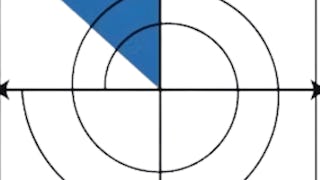In Software Requirements Elicitation for Secure Software Development, we're going to discuss the overall software requirements process as it applies in waterfall, spiral, and agile models. You'll learn about each of these processes and your goals as a software requirements analyst. This is not an easy task! Who do you talk to, when, and what kind of knowledge are you trying to obtain, in any software life cycle? How do you handle obstacles as you go?

Enjoy unlimited growth with a year of Coursera Plus for $199 (regularly $399). Save now.

Requirements Gathering for Secure Software Development
This course is part of Requirements Engineering: Secure Software Specifications Specialization

Instructor: Kristen Walcott-Justice
20,469 already enrolled
Included with
(685 reviews)
Skills you'll gain
Details to know

Add to your LinkedIn profile
4 assignments
See how employees at top companies are mastering in-demand skills

Build your subject-matter expertise
- Learn new concepts from industry experts
- Gain a foundational understanding of a subject or tool
- Develop job-relevant skills with hands-on projects
- Earn a shareable career certificate

There are 4 modules in this course
Software Requirements are a vital part of the Software Development Lifecycle. While there are many ways to go about collecting and recording requirements, the cost of bad requirements is high. Here we discuss what Software Requirements Specifications are and some challenges in writing them well.
What's included
5 videos4 readings1 assignment1 discussion prompt
We need to figure out what the customer wants. And moreso- what they need! How do you develop a relationship with you customers and learn about the overall domain and potential solutions? Here you will learn about the requirements engineering process, what it entails, how to develop a relationship with your customer, and some tips to succeed early on.
What's included
2 videos3 readings1 assignment
Not all requirements documents are created equally- if at all (formally). How you work with requirements partially depends on the software lifecycle used. Here we learn about the different software development lifecycles and discuss how they affect the requirements we produce.
What's included
3 videos3 readings1 assignment
To increase flexibility to change in software development, the agile lifecycle was produced. The agile process much changes how we deal with requirements. We discuss these challenges and your role as a requirements analyst. We also begin to analyze the types of statements that you want to form as you elicit data to move towards clarity.
What's included
8 videos4 readings1 assignment1 discussion prompt
Earn a career certificate
Add this credential to your LinkedIn profile, resume, or CV. Share it on social media and in your performance review.
Instructor

Offered by
Explore more from Software Development
 Status: Free Trial
Status: Free TrialUniversity of Colorado System
 Status: Free Trial
Status: Free TrialUniversity of Colorado System
 Status: Free Trial
Status: Free Trial Status: Free Trial
Status: Free TrialUniversity of Colorado System
Why people choose Coursera for their career




Learner reviews
685 reviews
- 5 stars
71.24%
- 4 stars
18.68%
- 3 stars
6.56%
- 2 stars
1.75%
- 1 star
1.75%
Showing 3 of 685
Reviewed on Oct 6, 2019
I have learned a great deal from this course. It brings real life situations into a better perspective.
Reviewed on Oct 8, 2020
This course defines all the basics of elicitation and what problems do we face in the process in a very simple and easy way.
Reviewed on Jan 3, 2020
Clear and well presented, with some interesting readings. Could benefit from an interactive game/quiz/tool or two, perhaps. Anyway, very good overall.
Frequently asked questions
To access the course materials, assignments and to earn a Certificate, you will need to purchase the Certificate experience when you enroll in a course. You can try a Free Trial instead, or apply for Financial Aid. The course may offer 'Full Course, No Certificate' instead. This option lets you see all course materials, submit required assessments, and get a final grade. This also means that you will not be able to purchase a Certificate experience.
When you enroll in the course, you get access to all of the courses in the Specialization, and you earn a certificate when you complete the work. Your electronic Certificate will be added to your Accomplishments page - from there, you can print your Certificate or add it to your LinkedIn profile.
Yes. In select learning programs, you can apply for financial aid or a scholarship if you can’t afford the enrollment fee. If fin aid or scholarship is available for your learning program selection, you’ll find a link to apply on the description page.
More questions
Financial aid available,





